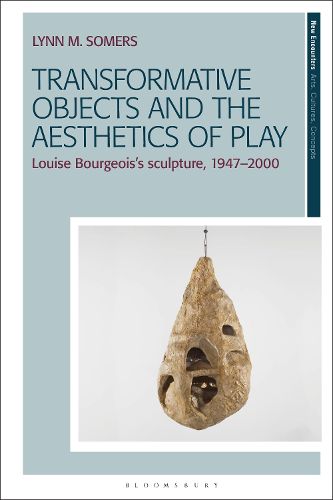Readings Newsletter
Become a Readings Member to make your shopping experience even easier.
Sign in or sign up for free!
You’re not far away from qualifying for FREE standard shipping within Australia
You’ve qualified for FREE standard shipping within Australia
The cart is loading…






This book considers the sculpture of Louise Bourgeois (1911-2010) in light of psychoanalyst D. W. Winnicott's (1896-1971) radical ideas regarding transitional objects, potential space, and play, offering a model for exploring the complex and psychologically evocative work Bourgeois produced from 1947 to 2000. Critical concepts from British object relational theories - destruction, reparation, integration, relationality and play - drawn from the writings of Winnicott, Melanie Klein, Marion Milner, and Christopher Bollas, among others, bear upon the decades-long study of psychoanalysis Bourgeois brought to her sculptural production that was symbolic, metaphorical, and most importantly, useful.
The book demonstrates how Bourgeois's transformative sculptural objects and environments are invested in object relations, both psychical and tangible, and explores Bourgeois's contention that the observer physically engage with the intricate sculptural objects and architectural spaces she produced. Each chapter focuses on a key body of work - Femme Maison, Personages, Lairs, Janus, and Cells - examining how these imaginative and playful objects are staged as embodied encounters in space and time to invoke the mutuality, reciprocity, and ambivalence of our object relationships.
Weaving a tapestry of aesthetic, cultural, and psychological encounters, Transformative Objects and the Aesthetics of Play addresses critical relationships among Bourgeois's work and that of other artists from Pieter Brueghel to Eva Hesse. It brings together practical, archival, and theoretical material, offering close examinations of historically situated objects and analyses of their complex affects and spatiality. Gathering critical perspectives from psychoanalysis, cultural analysis, feminist, queer, literary and affect studies, the book extends its specific art historical scope to investigate the crucial roles that art and cultural experience assume in everyday life.
$9.00 standard shipping within Australia
FREE standard shipping within Australia for orders over $100.00
Express & International shipping calculated at checkout
Stock availability can be subject to change without notice. We recommend calling the shop or contacting our online team to check availability of low stock items. Please see our Shopping Online page for more details.
This book considers the sculpture of Louise Bourgeois (1911-2010) in light of psychoanalyst D. W. Winnicott's (1896-1971) radical ideas regarding transitional objects, potential space, and play, offering a model for exploring the complex and psychologically evocative work Bourgeois produced from 1947 to 2000. Critical concepts from British object relational theories - destruction, reparation, integration, relationality and play - drawn from the writings of Winnicott, Melanie Klein, Marion Milner, and Christopher Bollas, among others, bear upon the decades-long study of psychoanalysis Bourgeois brought to her sculptural production that was symbolic, metaphorical, and most importantly, useful.
The book demonstrates how Bourgeois's transformative sculptural objects and environments are invested in object relations, both psychical and tangible, and explores Bourgeois's contention that the observer physically engage with the intricate sculptural objects and architectural spaces she produced. Each chapter focuses on a key body of work - Femme Maison, Personages, Lairs, Janus, and Cells - examining how these imaginative and playful objects are staged as embodied encounters in space and time to invoke the mutuality, reciprocity, and ambivalence of our object relationships.
Weaving a tapestry of aesthetic, cultural, and psychological encounters, Transformative Objects and the Aesthetics of Play addresses critical relationships among Bourgeois's work and that of other artists from Pieter Brueghel to Eva Hesse. It brings together practical, archival, and theoretical material, offering close examinations of historically situated objects and analyses of their complex affects and spatiality. Gathering critical perspectives from psychoanalysis, cultural analysis, feminist, queer, literary and affect studies, the book extends its specific art historical scope to investigate the crucial roles that art and cultural experience assume in everyday life.